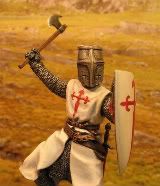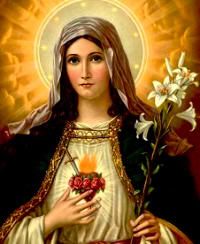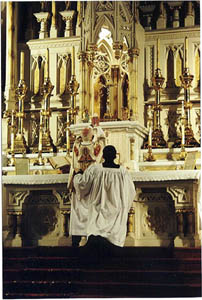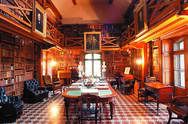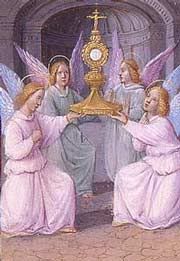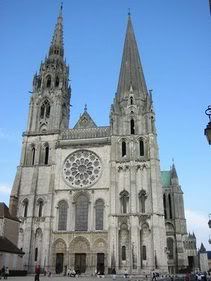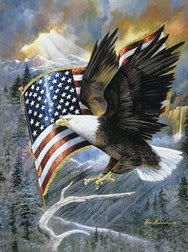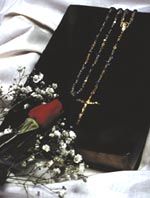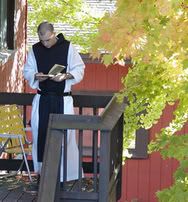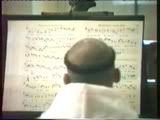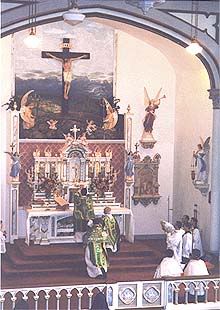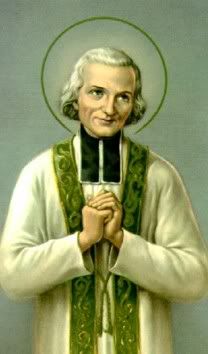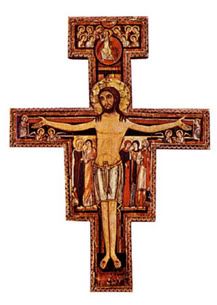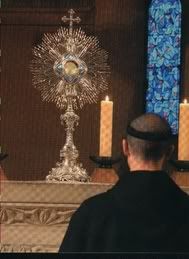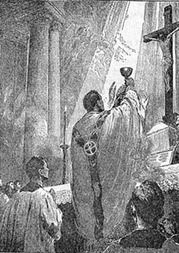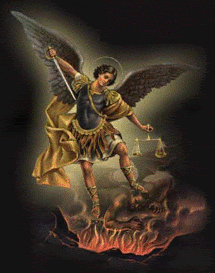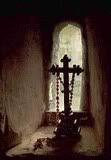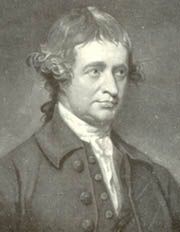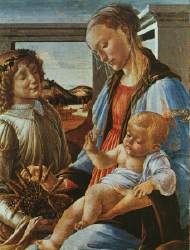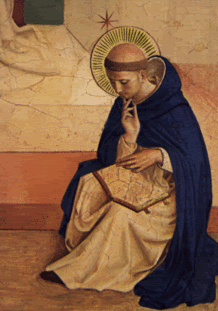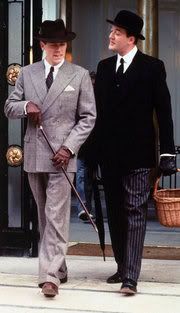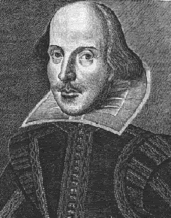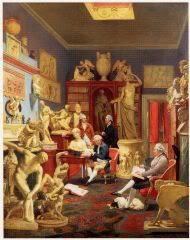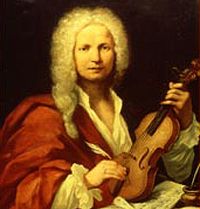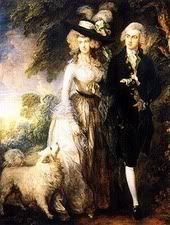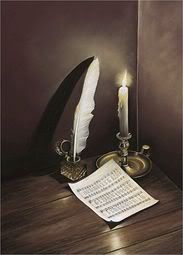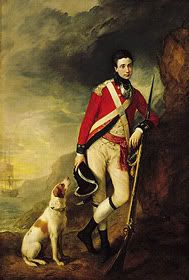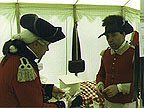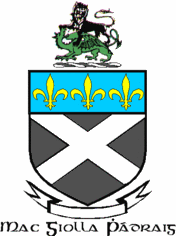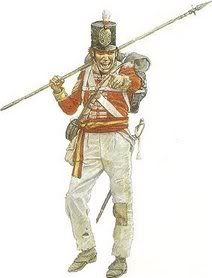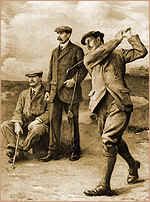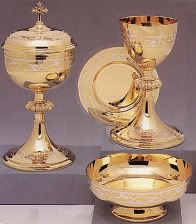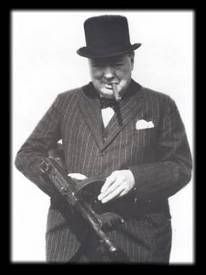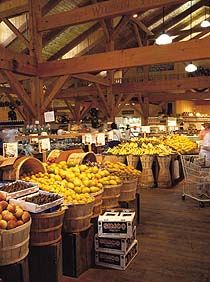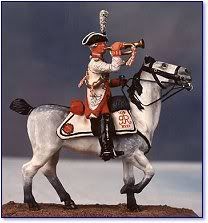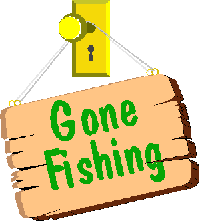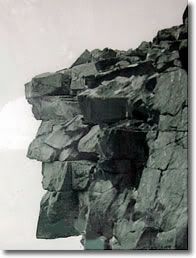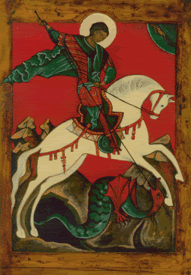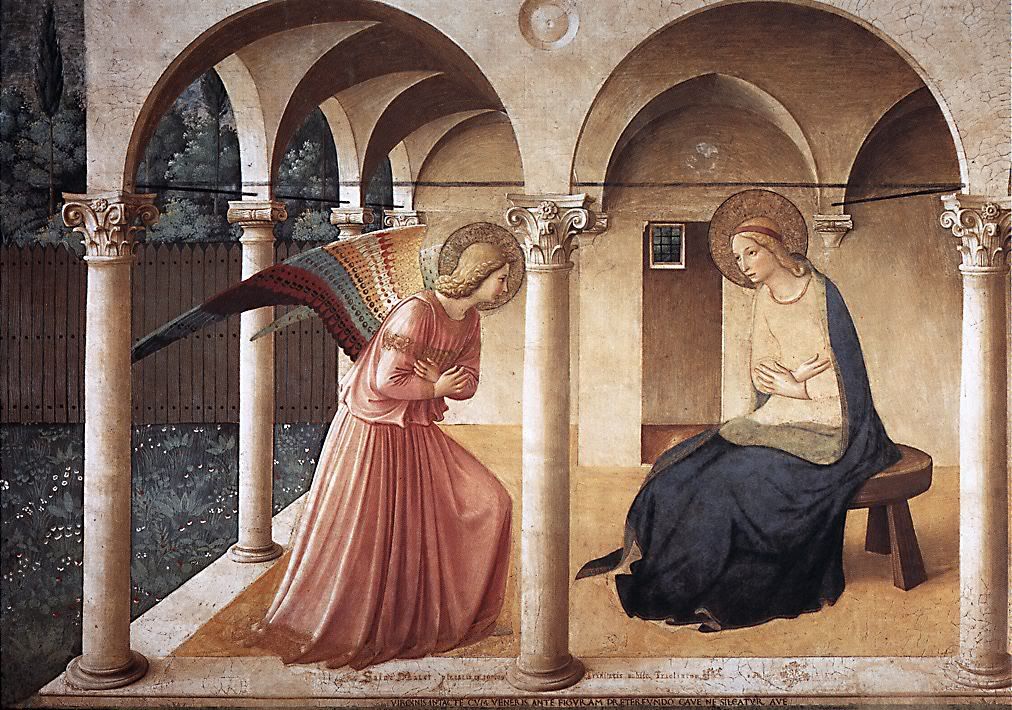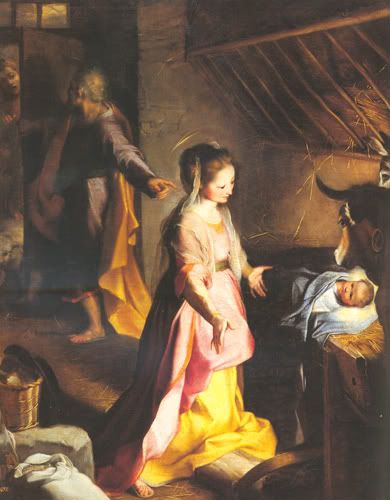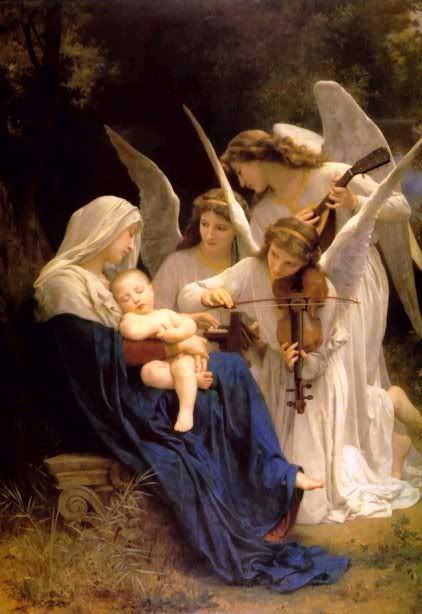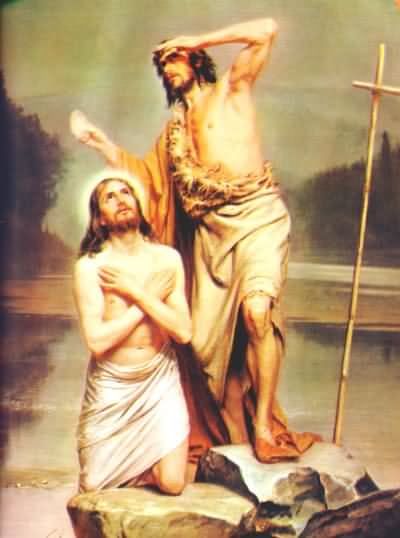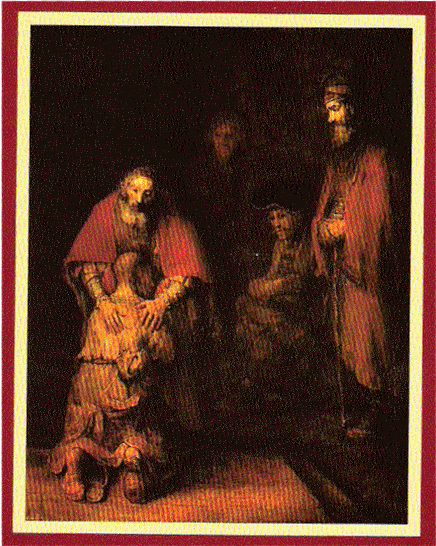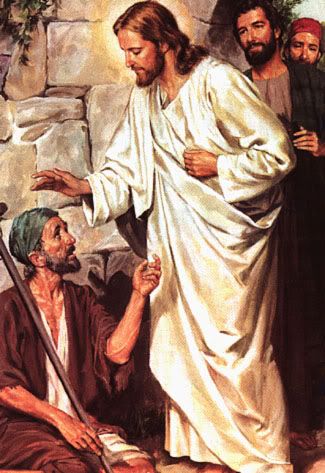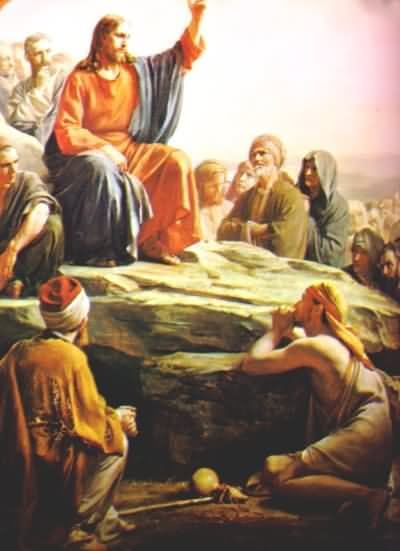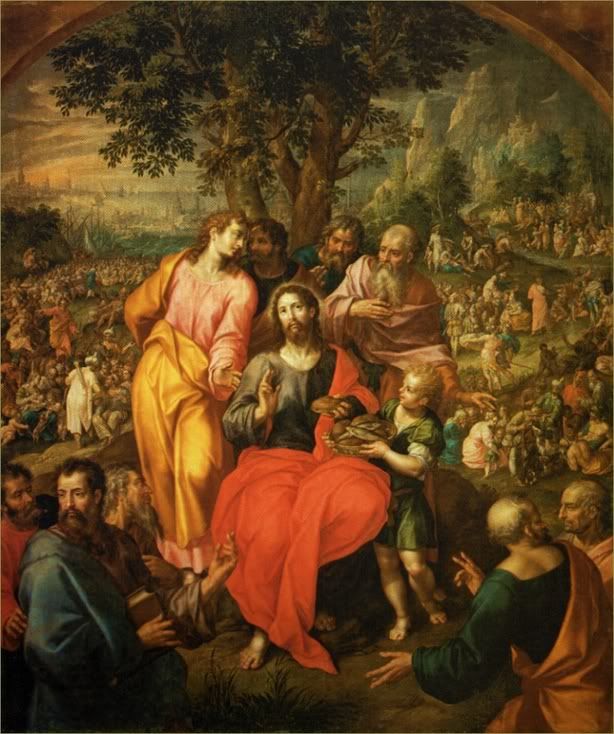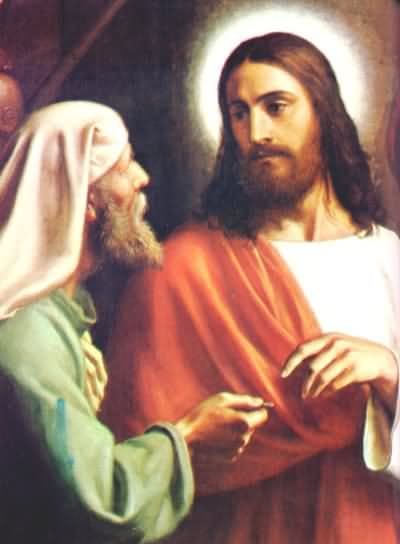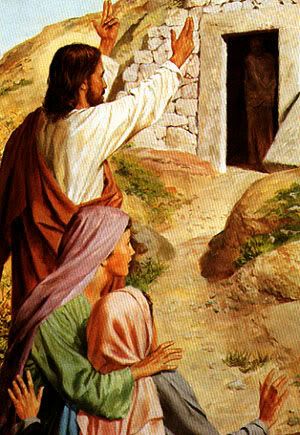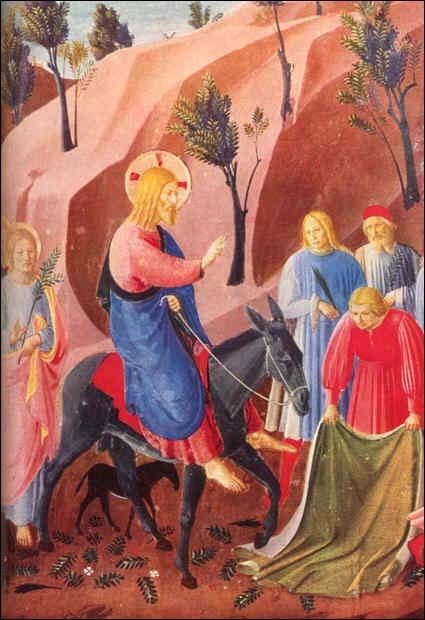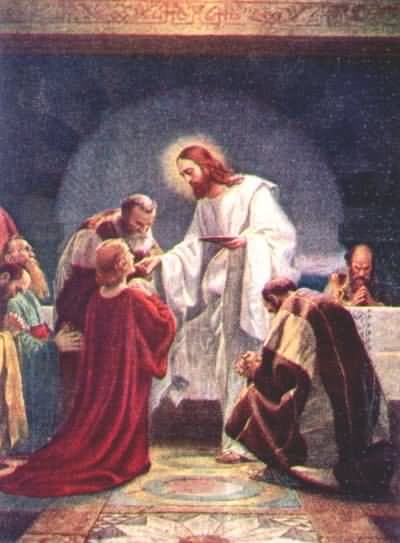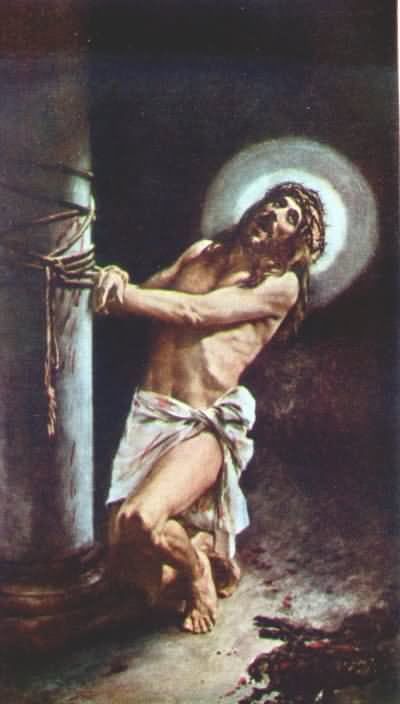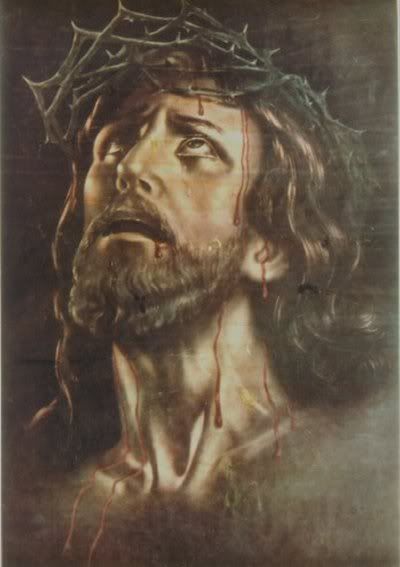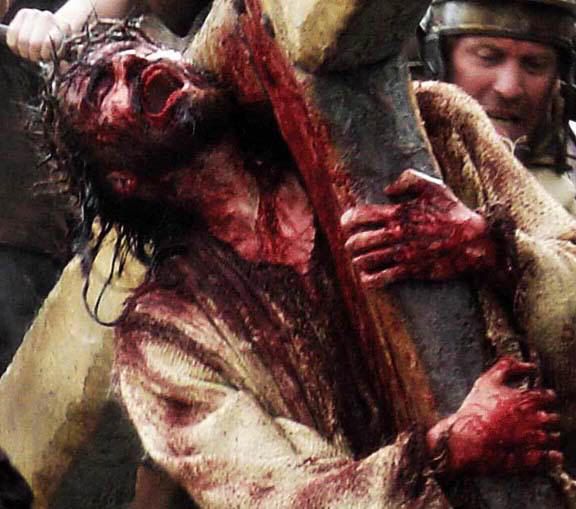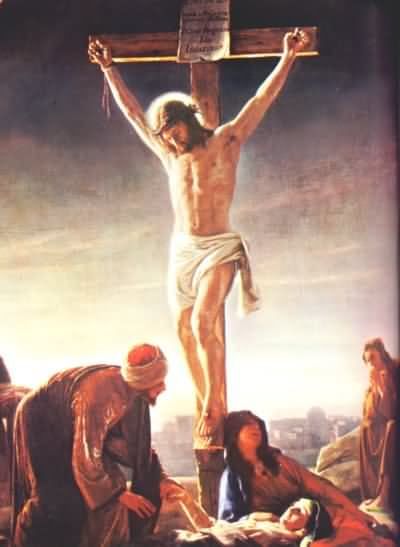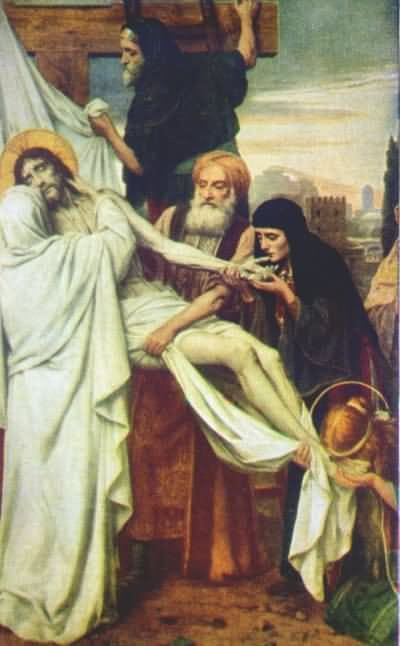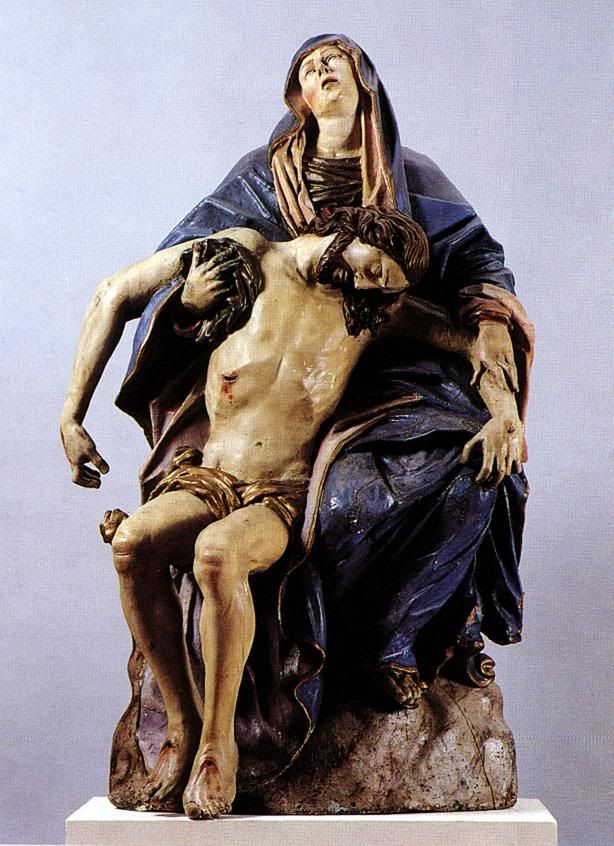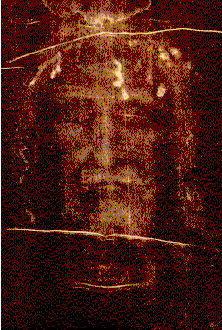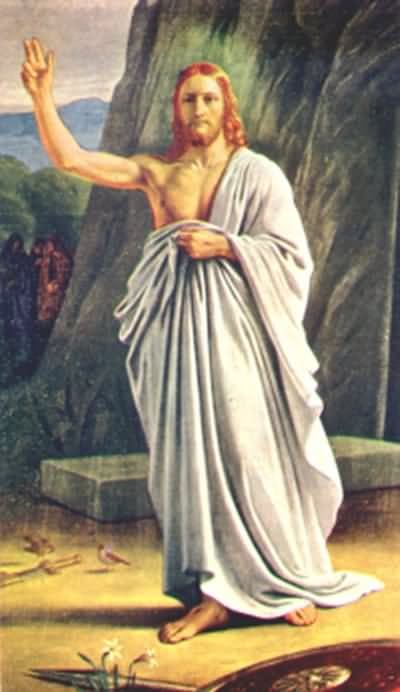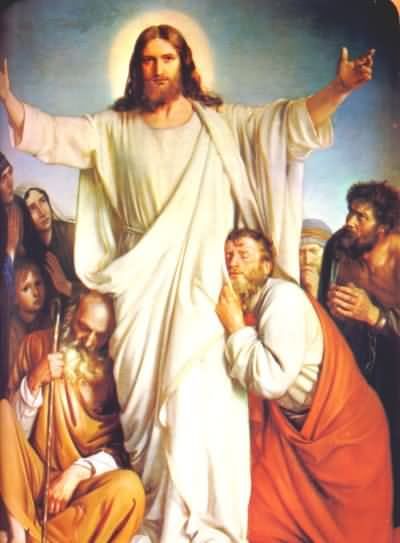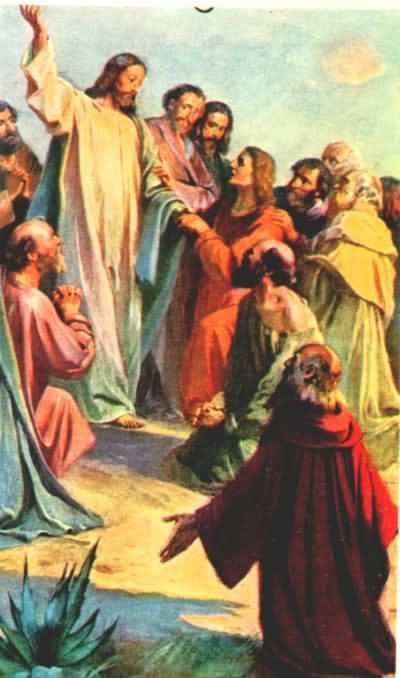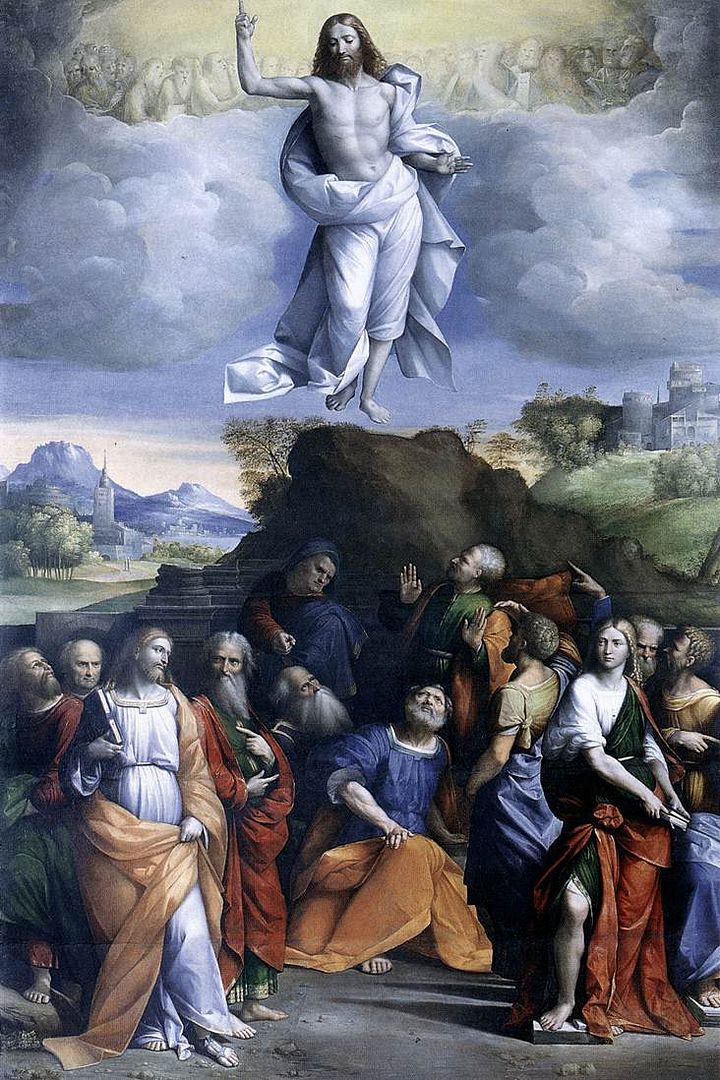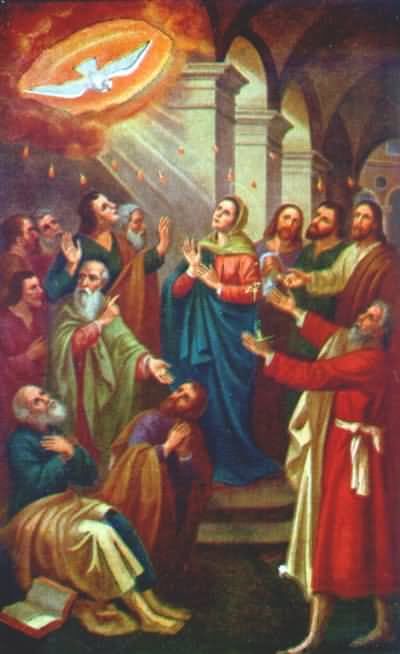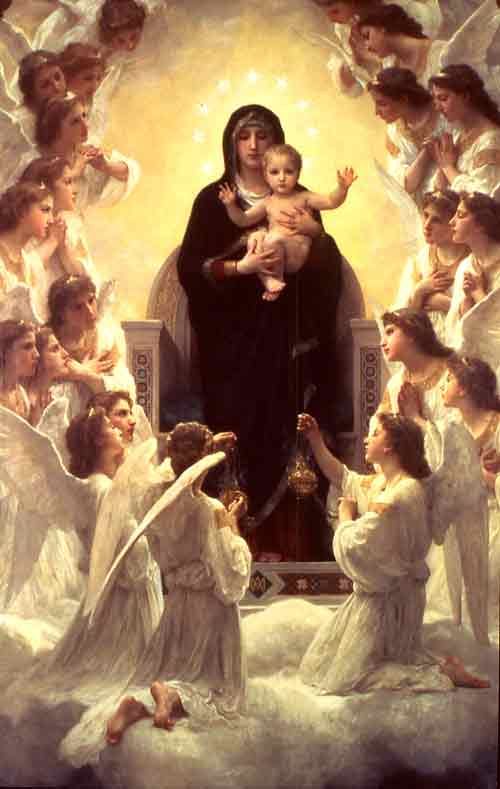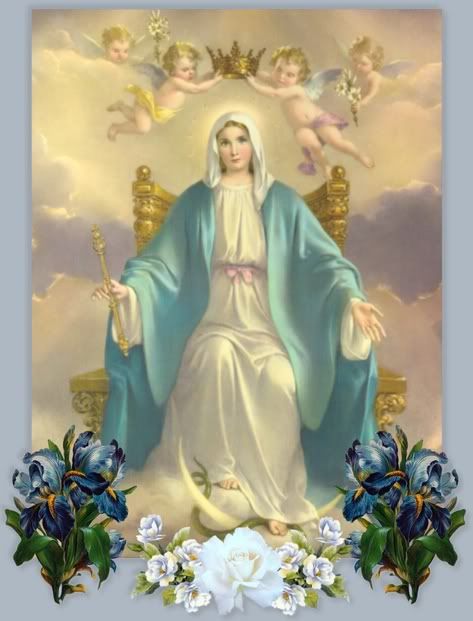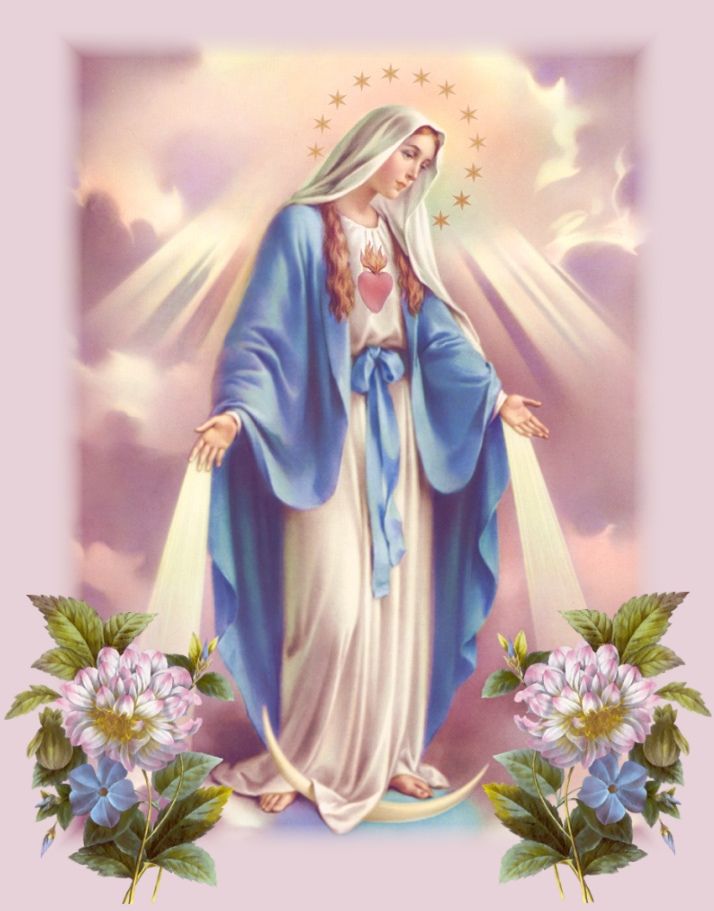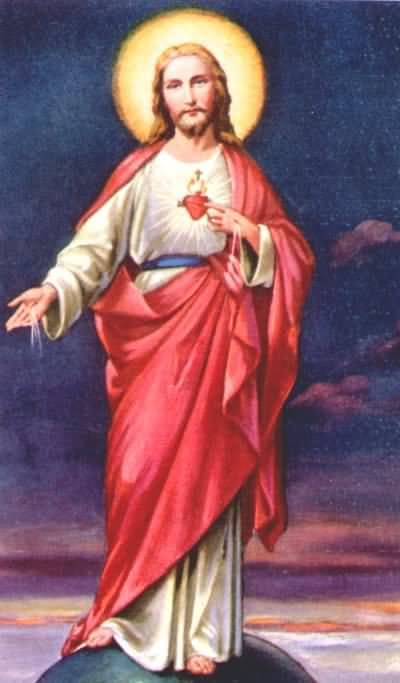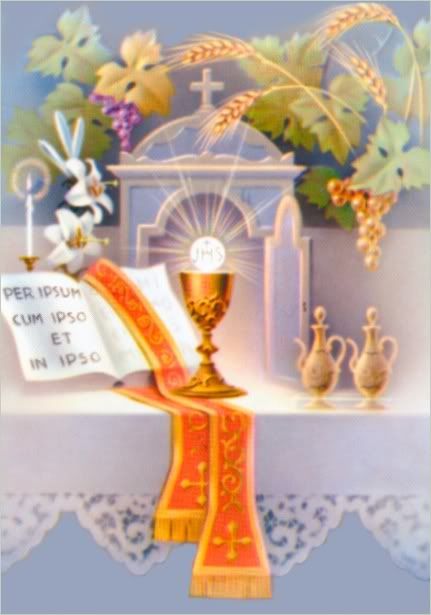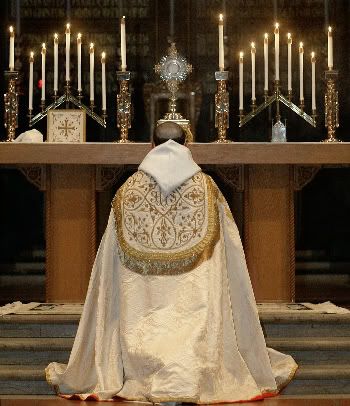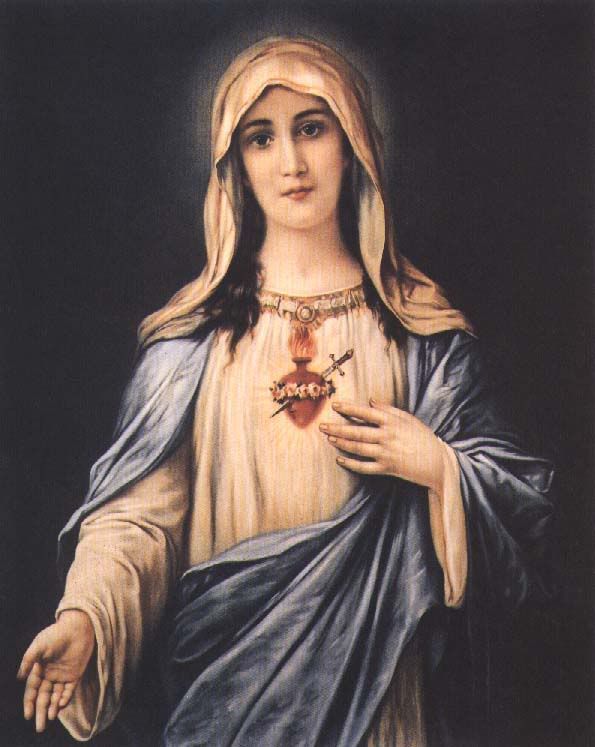Friday, April 25, 2003
And the Recently-Resumed Catholic and Enjoying It! Agrees With Me On Santorum
As I said in my comment at his site the other day, it is great to see Mark Shea back and blogging.
As I said in my comment at his site the other day, it is great to see Mark Shea back and blogging.
VDH On the Wages of Victory
National Review's Victor Davis Hanson spends some time considering the benefits of victory in Iraq. Among them, the fact that Syria and Iran may slip into normality without the US having to employ a single soldier or make a single air sortie. VDH did not know this when he wrot ehis article, but ehe Syrians have begun cooperating with the US. Syria just handed over to the US Saddam's head spook. Syria may be getting the message.
National Review's Victor Davis Hanson spends some time considering the benefits of victory in Iraq. Among them, the fact that Syria and Iran may slip into normality without the US having to employ a single soldier or make a single air sortie. VDH did not know this when he wrot ehis article, but ehe Syrians have begun cooperating with the US. Syria just handed over to the US Saddam's head spook. Syria may be getting the message.
It Has Been A Slow Blogging Week For Me
I spent the early part of the week working on the monster-huge Patriots' Day blog, and have had little time for blogging since then. Mrs. F is home on vacation this week, and we have been entertaining more than usual and are preparing for a visit by relatives from out of town next week. So, with work, blogging time has been limited. The early part of next week should see blogging return to normal.
On another note, in the next few weeks, Recta Ratio's URL is going to change to http://rectaratio.blogspot.com . I will give you several warnings before I make the switch. I don't want people to not be able to find my ramblings. Besides, I need to figure out a way to restore my archives (I've tried republishing them, but get Error203 Java Null point or something or other like that every time). I want the Verus Ratio and Verus Ratio Goes To War archives to make the move with me to the new URL. It is the same blog, after all.
I spent the early part of the week working on the monster-huge Patriots' Day blog, and have had little time for blogging since then. Mrs. F is home on vacation this week, and we have been entertaining more than usual and are preparing for a visit by relatives from out of town next week. So, with work, blogging time has been limited. The early part of next week should see blogging return to normal.
On another note, in the next few weeks, Recta Ratio's URL is going to change to http://rectaratio.blogspot.com . I will give you several warnings before I make the switch. I don't want people to not be able to find my ramblings. Besides, I need to figure out a way to restore my archives (I've tried republishing them, but get Error203 Java Null point or something or other like that every time). I want the Verus Ratio and Verus Ratio Goes To War archives to make the move with me to the new URL. It is the same blog, after all.
A Vigorous Debate Over At Bettnet
Neighbor Domenico Bettinelli has been hosting a very vigorous debate over the issue of whther the US bishops spend too much time talking about abortion. Frankly, I wholeheartedly agree with Domenico, that the bishops spend a miniscule amount of time, and essentially provide nothing more than lip service to the anti-abortion cause. Anyone who looks at how US bishops, both individually and collectively, really allocate time and resources could not reasonably come to the conclusion that they spend "too much time on abortion." As Domenico says, it is difficult to think of a more important issue while innocents are being slaughtered daily in huge numbers.
Neighbor Domenico Bettinelli has been hosting a very vigorous debate over the issue of whther the US bishops spend too much time talking about abortion. Frankly, I wholeheartedly agree with Domenico, that the bishops spend a miniscule amount of time, and essentially provide nothing more than lip service to the anti-abortion cause. Anyone who looks at how US bishops, both individually and collectively, really allocate time and resources could not reasonably come to the conclusion that they spend "too much time on abortion." As Domenico says, it is difficult to think of a more important issue while innocents are being slaughtered daily in huge numbers.
Mark Sullivan On Cuba
I said that, after the war with Iraq was over, the US would have to pay more attention to goings on in Cuba. Mark Sullivan at Ad Orientem is doing just that. He reports that board members at the Cuba Policy Foundation have resigned from the group, which calls for an end to the embargo on trade with Cuba, because of Castro's recent crack-down on dissidents. And Mark asks pointedly, "Where is the Catholic Left now that people in Cuba need an advocate against Castro's tyranny?" The answer is , as one might expect, "No where to be seen."
I said that, after the war with Iraq was over, the US would have to pay more attention to goings on in Cuba. Mark Sullivan at Ad Orientem is doing just that. He reports that board members at the Cuba Policy Foundation have resigned from the group, which calls for an end to the embargo on trade with Cuba, because of Castro's recent crack-down on dissidents. And Mark asks pointedly, "Where is the Catholic Left now that people in Cuba need an advocate against Castro's tyranny?" The answer is , as one might expect, "No where to be seen."
Feast of Saint Mark
Today, the Church honors Saint Mark, one of the Evangelists. He is believed to have been a resident of Jerusalem, and a boy at the time the Lord was present in human form on earth. It is thought that his family home was a gathering place for the Apostles, and may have provided the "Upper Room" in which the Last Supper was held. Mark is believed to have been baptized by Saint Peter, who probably was his source of information for Mark's Gospel. Mark became an associate of Saint Paul and Saint Barnabas in their missionary work. He may have become bishop of Alexandria, and may have been martyred during the reign of Trajan.
Today, the Church honors Saint Mark, one of the Evangelists. He is believed to have been a resident of Jerusalem, and a boy at the time the Lord was present in human form on earth. It is thought that his family home was a gathering place for the Apostles, and may have provided the "Upper Room" in which the Last Supper was held. Mark is believed to have been baptized by Saint Peter, who probably was his source of information for Mark's Gospel. Mark became an associate of Saint Paul and Saint Barnabas in their missionary work. He may have become bishop of Alexandria, and may have been martyred during the reign of Trajan.
Tariq Aziz Captured
Apparently he was hiding in Baghdad, and turned himself in. He suffers from a heart condition. Aziz had a much lower public profile this time around than he did in 1991, when he was foreign minister. He was the token Christian in Saddam's government.
Apparently he was hiding in Baghdad, and turned himself in. He suffers from a heart condition. Aziz had a much lower public profile this time around than he did in 1991, when he was foreign minister. He was the token Christian in Saddam's government.
Thursday, April 24, 2003
Deal Hudson: Sen. Santorum Is Correct
And I agree with both. Santorum merely said that, if the Supreme Court rules that Texas' anti-sodomy law cannot stand because it is deemed to impinge too much on the right to privacy manufactured by the Court in Griswold and Roe, etc., then there is no logical basis on which laws against bigamy, incest, bestiality, or adultery could stand. They must also violate the "right to privacy" if Texas' law is deemed to do so. Santorum is absolutely correct to point this out. And I agree with Deal Hudson's take on it (you may have received his e-letter this morning on the topic; if you haven't, I'd be happy to forward it to you).
Andrew Sullivan has taken to bashing Santorum, but what do you expect? Sullivan is nothing but a shill for the homosexual community and others interested in undermining traditional sexual morality. He has no credibility on any matter that even tangentially concerns homosexuals or homosexuality. That is why I don't link to him, no matter what he thinks about economics or foreign policy.
National Review's Stanley Kurtz defends Santorum against Sullivan and other opportunists like John Forbes Heinz Kerry. And he expends on his remarks in The Corner here, here, and here. Interestingly, Kurtz disagrees with the concept of anti-sodomy laws.
And I agree with both. Santorum merely said that, if the Supreme Court rules that Texas' anti-sodomy law cannot stand because it is deemed to impinge too much on the right to privacy manufactured by the Court in Griswold and Roe, etc., then there is no logical basis on which laws against bigamy, incest, bestiality, or adultery could stand. They must also violate the "right to privacy" if Texas' law is deemed to do so. Santorum is absolutely correct to point this out. And I agree with Deal Hudson's take on it (you may have received his e-letter this morning on the topic; if you haven't, I'd be happy to forward it to you).
Andrew Sullivan has taken to bashing Santorum, but what do you expect? Sullivan is nothing but a shill for the homosexual community and others interested in undermining traditional sexual morality. He has no credibility on any matter that even tangentially concerns homosexuals or homosexuality. That is why I don't link to him, no matter what he thinks about economics or foreign policy.
National Review's Stanley Kurtz defends Santorum against Sullivan and other opportunists like John Forbes Heinz Kerry. And he expends on his remarks in The Corner here, here, and here. Interestingly, Kurtz disagrees with the concept of anti-sodomy laws.
Reflections for the Easter Season
American Catholic.org, which sometimes has a banner ad here, has a nice assortment of readings, reflections, and e-cards for Easter.
American Catholic.org, which sometimes has a banner ad here, has a nice assortment of readings, reflections, and e-cards for Easter.
Palestinian Outrage Du Jour
Suicide bomber kills security guard and injures 10 bystanders at Kfar Saba. The attack came at a train station at rush hour.
Suicide bomber kills security guard and injures 10 bystanders at Kfar Saba. The attack came at a train station at rush hour.
Wednesday, April 23, 2003
Mistrial In New Hampshire Pervert Priest Case
Is it just me, or does Father Robichaud bear an uncanny resemblence to former Clinton Labor Secretary Robert B. Reich (height factored out)?
Is it just me, or does Father Robichaud bear an uncanny resemblence to former Clinton Labor Secretary Robert B. Reich (height factored out)?
Birthday of William Shakespeare
I have never been convinced that the man from Stratford-on-Avon is not the author of Shakespeare's plays and sonnets. And this is the day on which he is believed to have not only been born, but also to have died. How appropriate that both the beginning and ending of Shakespeare's life happened on the feast of England's patron saint!
I have never been convinced that the man from Stratford-on-Avon is not the author of Shakespeare's plays and sonnets. And this is the day on which he is believed to have not only been born, but also to have died. How appropriate that both the beginning and ending of Shakespeare's life happened on the feast of England's patron saint!
Saint George's Day
Saint George was apparently from Lydda, and suffered martyrdom shortly before the accession of Constantine. Other than that, the legend says he was a Roman military tribune, and that he saved a maiden, a king's daughter, by killing a dragon with his lance. George is the patron of England, of soldiers, and of men named George. Since the "G." of "G. Thomas Fitzpatrick" stands for George, Saint George is triply my patron.
It is also a festive night in the officers' messes of British regiments, as are the feasts of Saint Andrew, Saint David, and Saint Patrick. The historian Stuart Reid says that Saint George's Night was a more sedate event than the others. Trust us Celts to use our national patrons' feasts to get falling down drunk.
Saint George was apparently from Lydda, and suffered martyrdom shortly before the accession of Constantine. Other than that, the legend says he was a Roman military tribune, and that he saved a maiden, a king's daughter, by killing a dragon with his lance. George is the patron of England, of soldiers, and of men named George. Since the "G." of "G. Thomas Fitzpatrick" stands for George, Saint George is triply my patron.
It is also a festive night in the officers' messes of British regiments, as are the feasts of Saint Andrew, Saint David, and Saint Patrick. The historian Stuart Reid says that Saint George's Night was a more sedate event than the others. Trust us Celts to use our national patrons' feasts to get falling down drunk.
Monday, April 21, 2003
Patriots' Day
It is difficult for me to merely blog about Patriots' Day, the observed anniversary of the Battles of Lexington & Concord. For ten years I was deeply involved in the planning, preparation, and execution of the re-enactments in those towns. I've not just read, but practically memorized every primary source, and every secondary source as well, that concerns these battles. I have walked over the battlegrounds countless times, taken family and friends through the area on a tour I created myself, acted as an historical consultant for film and audio tape productions of the battles, lectured on them, and re-fought them. There are, I think it is safe to say, only a dozen or so living who know either more about the battles than I do, or just as much.
That said, since I have a book on the battles in my head, if not on paper (let alone copyrighted), I have to be careful not to give away the store. So, I shall limit myself to links and a few observations.
The first Patriots' Day, of course, was April 19, 1775. In the 20th century, the state of Massachusetts (it is also a holiday in Maine, part of Massachusetts until 1820) moved the holiday to the third Monday in April, to create a three-day weekend. Since the 1960s, the anniversary of the battles has been completely overshadowed by what was once a local race held on Patriots' Day, the Boston Marathon. It is now not uncommon to hear the day referred to as "Marathon Day." That name is appropriate for the relative amount of time spent on news coverage of the two events. In an hour's newscast, 45 minutes will be devoted to the Marathon (and all the Boston stations carry live coverage of the race, practically all afternoon). The Battle on Lexington Green may get a 30-second clip (two minutes if the stations feel guilty).
But the celebration of the anniversary of the start of the American Revolution gets good crowds in not just Lexington and Concord (up to 20,000 turn out every year at 5:00 am to get a spot to see the Battle on Lexington Green, a fifteen minute skirmish, which, from a re-enactor's point of view, is something of a disappointment, as it is over so quickly), but also Lincoln (the town between the two, through part of which the British marched under heavy fire on the way back to Boston), Arlington (then called Menotomy, the town in which the heaviest and bloodiest fighting took place, though the area is now so heavily developed that it is difficult to visualize the 18th century topography), Medford (a forced detour on Paul Revere's route), Cambridge (scene of some stiff fighting at the end of the day), and Boston's North End (Revere's home and the site of the Old North Church). Bedford, Danvers, Sudbury, Framingham, Billerica, and other towns all have local celebrations on or near Patriots. Day which draw small crowds.
The re-enactments as we know them are the product of an extraordinary fellow named Vincent J. R. Kehoe, a photographer, author, and make-up and special effects artist. In the 1960s, he attended some of the earliest efforts at recreating for the public the battles. Nobody wanted to play the British "bad guys." So some of the minutemen would don red paper hats for the occasion (I have a postcard depicting this). Standards of discipline, safety, and historical accuracy were comparatively low. Kehoe spent a great deal of time and money researching what British soldiers on April 19th should have looked like, from the way hair was worn, to patterns for shoes. He also turned his attention to training and drill. The result of his efforts was the Tenth Regiment of Foot, one of the first British Rev War re-enactment units, and during the Bicentennial, the largest and best-known. To this day, military miniaturists often model their figures on the 10th.
Taking Kehoe's ground-breaking work with the Tenth as a start, others began forming other British units. The 64th Regiment of Foot, and the 23rd Royal Welch Fusileers are "national" regiments, with companies scattered over the eastern part of the US (the 23rd has a small affiliated company in the UK), while the 10th is concentrated in Greater Boston.
Since the end of the Bicentennial, the trend has been towards smaller regiments, by-passing the promotion logjam in established units like the 10th or 23rd. The 4th (King's Own) Regiment and the 5th Regiment of Foot (check out their photo gallery), along with part of the Brigade of Guards on American Service now are established in the Boston/southern New Hampshire area. The 23rd is in the process of raising a company in Greater Boston as well. The 64th's Light Company is based in Worcester. The 74th Highlanders is a small unit based in Marblehead. The 22nd Regiment and 40th (which wears a 1777-campaign uniform) are established on the New England south coast. There is a group of British Marines on the Cape. The 29th was long a part of the landscape from Vermont, but has declined. The loyalist King's Rangers is based in southern New Hampshire. The 71st (Fraser's) Highlanders has a company in Maine.
Much of this growth in new smaller regiments in the New England area has come at the expense of the 10th, though the 10th continues to thrive, but on a much smaller basis than it enjoyed in 1975-1978. The 10th enjoys a core of experienced officers and NCOs who have been around since the Bicentennial. And standards of historical accuracy have enjoyed a great boost in the last 8 years, due in part to renowed interest from Kehoe, who retired as head of the 10th in 1978. The Tenth is a great group of guys, and a good place to learn the re-enacting trade.
All of these groups are constantly in search of new members. Each has its own "group culture" and club politics. So there is a great deal to pick from. Men looking to join should shop around, as the investment in time and treasure is not inconsiderable.
While the British side has been long-established as a professional re-enactment force, the American side of the conflict languished. Just before the Bicentennial, local minuteman companies formed in many towns. These were small groups, with highly imaginative concepts of what Massachusetts militia in 1775 looked like (I have a photo of an elderly guy in a fedora with a feather in it, with a cordoroy blazer, athletic socks, modern suede lace-up shoes, button-down checked shirt, and modern eyeglasses carrying a musket at a battle in the early 1980s). Safety and training were secondary for most of these "marching and chowder societies." Some developed "uniforms." The Wilmington Minutemen for a long time wore yellow waistcoasts of undetermined fiber content. The Lexington Minutemen have a Continental Army-style dress uniform made, almost certainly, of polyester that they wear on special occasions. These units could not work effectively together in large formations. They took forever to load and fire. And they were often seen to use rammers (ramrods) in battle, which is a very serious safety concern. One unit sealed their paper cartridges with a hot glue gun, and stuffed the glued cartridge paper down the barrel, creating a projectile that would come out of their barrels. Yipes!
In recent years, there has been improvement on the American side. More and more folks on the American side have decided to go professional. If their drill is still slow, they at least have taken more trouble to learn what men in Eastern Massachusetts dressed like in 1775. You see more correct coats, more broad-brimmed hats, more authentic shoes and eyeglass frames. Part of the improvement is from members of Continental Army units taking on a secondary role as militia for limited purposes. Members of the 2nd and 10th Massachusetts Regiments of the Continental Line often put on civilian clothes to form Prescott's Massachusetts Battalion, a 1775-period regiment. Part of the improvement is that a new generation of guys have entered the minuteman companies, and they have generally taken historical accuracy more seriously. Their example has spurred some of the older guys to try harder for an accurate, and safe, portrayal.
You see fewer beards and moustaches (Englishmen and Americans in the 18th century tended overwhelming to be clean-shaven, meaning that they shaved every other day at least). Yet many re-enactors and interpreters (as at Colonial Williamsburg) are loath to part their facial hair for the campaign season. Facial hair was one of Kehoe's big pet peeves. Feuds that were started with other British units of the '70s that allowed it are only recently healed.
The scene of the battle is a matter of some interest. Today, the battlefield stretches over 6 towns. The scene of the first clash, Lexington Green, is owned by the Town of Lexington and is preserved as a public park. It is smaller than it was in 1775 because of modern roads on two sides of it. Statues and monuments, as well as a huge flagpole, mar the 18th century feel of the site. The meetinghouse is gone. The belfry was reconstructed on a hill nearby. But the Green is in no danger and remains the center of life in Lexington. The Lexington Historical Society maintains the Buckman Tavern across from the Green. It was the mustering point of the Lexington Militia on April 19th. According to one British officer, the first shot of the American Revolutinary War was fired from one of the windows of the Tavern. The Lexington Chamber of Commerce maintians a visitors' center just behind the Buckman Tavern. In it, one will find an excellent diorama of the battle built in part by William Buckley, the CIA officer who was kidnapped and killed by terrorists in Lebanon in the 1980s. There are some good photos of Lexington sites and the re-enactment at this site, including a not particularly good one of the diorama Buckley helped build.
Concord's Old North Bridge, and the road running from Concord Center to Route 128, known in the 18th century as the Old Bay Road, is the heart of Minuteman National Historical Park. The Park Service has, in the last 10 years, done a great deal to restore the landscape to its 18th century appearance through reconstruction of stone walls, refurbishing original dwellings, burying power lines, cutting back secondary growth in areas land use studies show were meadows, ploughed fields, or orchards in 1775. In the 1960s, it bought all of the property in the park, and the remaining occupied modern dwellings will be vacated and torn down when the owners die or move out.
The area around the Old North Bridge retains its rural feel, though a modern highway is just out of sight. It is one of my favorite places to walk and think and look at ducks. The Park Service has a decent bookstore/giftshop in the mansion built nearby by one of the descendants of one of the Concord officers of 1775. In the same visitors' center, there is an excellent 1/32nd scale diorama of the fight at Meriam's Corner, as well as donated uniforms, muskets, and re-enactor photos. The park's library is excellent for anyone studying the battle seriously.
The Battle Road section of Minuteman National Historical Park stretches about 5 miles from Meriam's Corner to Route 128. Parts of the road have been completely restored to the 1775 appearance (and thus no cars or buses are allowed on them) but parts are still a much-used highway. I've walked the road, or parts of it, many times. The land for up to 100 yards on either side of the road is part of the National Park. It is wonderful to see the area preserved in its 1775 appearance. But Park Service control also limits the land's use by re-enactors (the Park Service has been thoroughly spooked by deaths in Civil War re-enactments and has imposed some insanely restrictive rules regarding safety at re-enactments, though local authorities have been more open to re-enactment and flexible in application than their counterparts at, say, Gettysburg). The NPS's second visitors' center, located near the south gate of Hanscom AFB, contains an excellent mural of the fighting along the Battle Road recently painted by John Rush.
The British withdrawal continued past the confines of the present-day national park, along old Massachusetts Avenue through what is down downtown Lexington (past the Battle Green again), through East Lexington, into highly-developed downtown Arlington, into a corner of Cambridge, then through a section, I think, of Somerville, and into Charlestown, which is now part of the City of Boston. Route 128/I95, Boston's inner beltway, crosses the Battle Road just east of the eastern border of the National Park. From there eastward one has less and less the sense that one is traversing what was this country's first battlefield. One sees and old house here or there in Lexington. There is a stone tablet here or a cannon in stone there to mark events along the British line of withdrawal. But once one reaches Arlington, there is no sense that one is travelling on anything other than the town's main street. The same holds true for Cambridge. The only dwelling that played a significant role in the battle in Arlington, the Jason Russell House, is preserved as a museum. There, 12 militiamen, mostly from the North Shore (and especially from Danvers), were killed along with possibly a half-score of British soldiers in the heaviest fighting of the day.
The British withdrawal ended on Bunker Hill in Charlestown. The weary troops began to dig in there under the protection of the Royal Navy. But General Gage felt he did not have enough troops to hold Charlestown, and withdrew them a few days later, only to have to storm the hills of Charlestown two months later at a cost of 1,000 casualties.
I spent some time (I first posted this blog, but did not publish it, Monday afternoon; it's now Wednesday morning) doing a few searches for the famous Amos Doolittle prints of the battles, but was unable to locate them on line (very odd). These engravings were executed in the summer of 1775 with the help of his friend Ralph Earl. They give a faithful view of the topography of the area in 1775, if of nothing else. Happily, B.C.'s Dean Ryan, a minuteman of long-standing, has written about them for Concord Magazine. Allen French, in both his books on the subject, also discusses Doolittle & Earl's work in detail.
WPI's ROTC maintains a site with excellent information for those wishing to study the battles closely.
Scholarship on the battles has also seen tremendous advances in the last decade or so. Histories of the battles date back to a few days after they were fought. General Gage himself assembled British accounts to write his own report for London. Massachusetts rebel authorities assembled a host of deposition testimony in the week after the battles, so that their side of the events could be told in London. Yale President Ezra Stiles wrote an account based on eyewitness testimony (and lots of hearsay).
Concord and Lexington each generated local historians with rival claims. So intense was the effort to conceal the fact that the Lexington militia company had, indeed fired shots during the battle on the Green, that they were often depicted as completely innocent and unresisting victims of a massacre, like the crowd in Paul Revere's Boston Massacre print. As a result of Lexington's reticence, Concord tried to claim the bragging right of being the scene of the first forcible resistance to the British. A controversy ensued in the 19th and 20th centuries over in which town the "shot heard round the world" was fired.
Now that few of the inhabitants of either town are descendants of embattled farmers, passions have died away. The first armed resistance of the American Revolution was in Lexington. Concord is the scene of the first American military victory. The phrase "the shot heard round the world" was written for the poem Concord Hymn, which is on the pedestal of the minuteman statue at Concord's Old North Bridge. That compromise seems to satisfy most people today.
Allen French wrote what became the standard history of the battles in the 1920s and 1930s. The Day of Concord and Lexington should be read in conjunction with his later book, General Gage's Informers. Together, they form a careful sifting of the evidence. Harold Murdock was also a leading light in the history of the battles from the early 20th century. His Historic Doubts On the Battle of Lexington is highly enjoyable. The Battle of April 19, 1775, by Frank Warren Coburn is another good early history.
After World War II, three more books made important contributions. Arthur Tourtellot wrote William Diamond's Drum (republished as Lexington & Concord) to put forward the theory that the stand of the Lexington militia almost on the British line of march was the work of Samuel Adams, who was seeking a spark to touch off a war. Robert Gross brought modern social and economic history to the discussion, looking at controversies and conditions in the town of Concord in The Minutemen and Their World. In my opinion, his economic analysis is overworked for the circumstances. General John Galvin, a Wakefield native, and now a retired 4-star general and former NATO Supreme Commander, wrote a study of the Massachusetts militia for one of his doctoral studies. The Minute Men: The First Fight, Myths and Realities of the American Revolution does a good job on the organization of the minutemen and militia. He gives the best account of American and British tactics. He does, I think, overstate the degree of discipline in the militia. I also caught a passage lifted verbatim without attribution from Murdock. His account of the first five miles of the British withdrawal is, in places, based on nothing more than conjecture.
From the same time period as The Minute Men is Vincent J. R. Kehoe's two compilations of original sources, We Were There: The American Participants, and We Were There: The British Participants. Kehoe's compilations are essential for scholars of the battle. They were privately published and distributed. I am indebted to my friend Warren Smith for loaning me his copies years ago for reproduction.
More recently, Joyce Lee Malcom, whose greatest scholarship has been in the area of the the history of the rights to gun ownership, undertook a vitally important study of how the lands in Minuteman National Park were used in 1775. The Scene of the Battle
is essential scholarship based on tax and probate records, prints, old maps, accounts of the battle, and a close study of the battlefield. It is astonishing how much we know about how the lands in the Park were used in 1775. We owe much of what we know to Malcolm's work.
In 1993, the history of the battle received its best treatment yet. David Hackett Fischer, a professor at Brandeis, wrote what is, for now, the last word. Paul Revere's Ride focuses on the role of Revere in the information-spreading network of the Massachusetts rebels. But that was not enough for a full-length book. He fixed the problem by tacking on an excellent study of the battles. With its numerous citations, and truly worthwhile appendices on everything from the composition of the British forces involved to the weather and tides, no one can write about the battles now without being thoroughly familiar with this work. There is also a 17-page discussion of the historiography of April 19th and Paul Revere. Significantly, Fischer relied heavily on Kehoe's work. It is not saying too much to claim that Paul Revere's Ride is the best work on a topic in American history in the last 30 years. And I say that as someone who knows the work, and its weaknesses, well.
Some of the greatest resources concerning the battles are personal, not written or physical. I have greatly profited from conversations and correspondence over 15 years with Vincent Kehoe, Minuteman National Park's historian emeritus Douglas Sabin, its chief ranger-interpreter Marc Nicapor (a former 10th and 23rd member), and former volunteer coordinator (and 10th and 5th Foot member) Clint Jackson, as well as with David Fischer, Joyce Malcolm, Danvers Archivist Richad Trask, the 10th Foot's Warren Smith, artist Don Troijani, and the 23rd's Eric Goldstein, an expert on edged weapons and metal work (buttons, badges, shoulder belt plates) of the period.
I ought not to forget the hundreds of tourists who have asked the pointed question, "Are you guys the 'redcoats?'" My own involvement has had me photographed hundreds of times for tourist photo albums belonging to people all over Asia, particularly Japan. I honed my explanatory patter doing impromptu demonstrations of drill with a small group at the Old North Bridge and at Lexington Green just for the fun of it. I learned to overcome my natural shyness, if only while playing a role, and had to keep on my toes so that I could answer their questions accurately. Practice makes perfect.
It is difficult for me to merely blog about Patriots' Day, the observed anniversary of the Battles of Lexington & Concord. For ten years I was deeply involved in the planning, preparation, and execution of the re-enactments in those towns. I've not just read, but practically memorized every primary source, and every secondary source as well, that concerns these battles. I have walked over the battlegrounds countless times, taken family and friends through the area on a tour I created myself, acted as an historical consultant for film and audio tape productions of the battles, lectured on them, and re-fought them. There are, I think it is safe to say, only a dozen or so living who know either more about the battles than I do, or just as much.
That said, since I have a book on the battles in my head, if not on paper (let alone copyrighted), I have to be careful not to give away the store. So, I shall limit myself to links and a few observations.
The first Patriots' Day, of course, was April 19, 1775. In the 20th century, the state of Massachusetts (it is also a holiday in Maine, part of Massachusetts until 1820) moved the holiday to the third Monday in April, to create a three-day weekend. Since the 1960s, the anniversary of the battles has been completely overshadowed by what was once a local race held on Patriots' Day, the Boston Marathon. It is now not uncommon to hear the day referred to as "Marathon Day." That name is appropriate for the relative amount of time spent on news coverage of the two events. In an hour's newscast, 45 minutes will be devoted to the Marathon (and all the Boston stations carry live coverage of the race, practically all afternoon). The Battle on Lexington Green may get a 30-second clip (two minutes if the stations feel guilty).
But the celebration of the anniversary of the start of the American Revolution gets good crowds in not just Lexington and Concord (up to 20,000 turn out every year at 5:00 am to get a spot to see the Battle on Lexington Green, a fifteen minute skirmish, which, from a re-enactor's point of view, is something of a disappointment, as it is over so quickly), but also Lincoln (the town between the two, through part of which the British marched under heavy fire on the way back to Boston), Arlington (then called Menotomy, the town in which the heaviest and bloodiest fighting took place, though the area is now so heavily developed that it is difficult to visualize the 18th century topography), Medford (a forced detour on Paul Revere's route), Cambridge (scene of some stiff fighting at the end of the day), and Boston's North End (Revere's home and the site of the Old North Church). Bedford, Danvers, Sudbury, Framingham, Billerica, and other towns all have local celebrations on or near Patriots. Day which draw small crowds.
The re-enactments as we know them are the product of an extraordinary fellow named Vincent J. R. Kehoe, a photographer, author, and make-up and special effects artist. In the 1960s, he attended some of the earliest efforts at recreating for the public the battles. Nobody wanted to play the British "bad guys." So some of the minutemen would don red paper hats for the occasion (I have a postcard depicting this). Standards of discipline, safety, and historical accuracy were comparatively low. Kehoe spent a great deal of time and money researching what British soldiers on April 19th should have looked like, from the way hair was worn, to patterns for shoes. He also turned his attention to training and drill. The result of his efforts was the Tenth Regiment of Foot, one of the first British Rev War re-enactment units, and during the Bicentennial, the largest and best-known. To this day, military miniaturists often model their figures on the 10th.
Taking Kehoe's ground-breaking work with the Tenth as a start, others began forming other British units. The 64th Regiment of Foot, and the 23rd Royal Welch Fusileers are "national" regiments, with companies scattered over the eastern part of the US (the 23rd has a small affiliated company in the UK), while the 10th is concentrated in Greater Boston.
Since the end of the Bicentennial, the trend has been towards smaller regiments, by-passing the promotion logjam in established units like the 10th or 23rd. The 4th (King's Own) Regiment and the 5th Regiment of Foot (check out their photo gallery), along with part of the Brigade of Guards on American Service now are established in the Boston/southern New Hampshire area. The 23rd is in the process of raising a company in Greater Boston as well. The 64th's Light Company is based in Worcester. The 74th Highlanders is a small unit based in Marblehead. The 22nd Regiment and 40th (which wears a 1777-campaign uniform) are established on the New England south coast. There is a group of British Marines on the Cape. The 29th was long a part of the landscape from Vermont, but has declined. The loyalist King's Rangers is based in southern New Hampshire. The 71st (Fraser's) Highlanders has a company in Maine.
Much of this growth in new smaller regiments in the New England area has come at the expense of the 10th, though the 10th continues to thrive, but on a much smaller basis than it enjoyed in 1975-1978. The 10th enjoys a core of experienced officers and NCOs who have been around since the Bicentennial. And standards of historical accuracy have enjoyed a great boost in the last 8 years, due in part to renowed interest from Kehoe, who retired as head of the 10th in 1978. The Tenth is a great group of guys, and a good place to learn the re-enacting trade.
All of these groups are constantly in search of new members. Each has its own "group culture" and club politics. So there is a great deal to pick from. Men looking to join should shop around, as the investment in time and treasure is not inconsiderable.
While the British side has been long-established as a professional re-enactment force, the American side of the conflict languished. Just before the Bicentennial, local minuteman companies formed in many towns. These were small groups, with highly imaginative concepts of what Massachusetts militia in 1775 looked like (I have a photo of an elderly guy in a fedora with a feather in it, with a cordoroy blazer, athletic socks, modern suede lace-up shoes, button-down checked shirt, and modern eyeglasses carrying a musket at a battle in the early 1980s). Safety and training were secondary for most of these "marching and chowder societies." Some developed "uniforms." The Wilmington Minutemen for a long time wore yellow waistcoasts of undetermined fiber content. The Lexington Minutemen have a Continental Army-style dress uniform made, almost certainly, of polyester that they wear on special occasions. These units could not work effectively together in large formations. They took forever to load and fire. And they were often seen to use rammers (ramrods) in battle, which is a very serious safety concern. One unit sealed their paper cartridges with a hot glue gun, and stuffed the glued cartridge paper down the barrel, creating a projectile that would come out of their barrels. Yipes!
In recent years, there has been improvement on the American side. More and more folks on the American side have decided to go professional. If their drill is still slow, they at least have taken more trouble to learn what men in Eastern Massachusetts dressed like in 1775. You see more correct coats, more broad-brimmed hats, more authentic shoes and eyeglass frames. Part of the improvement is from members of Continental Army units taking on a secondary role as militia for limited purposes. Members of the 2nd and 10th Massachusetts Regiments of the Continental Line often put on civilian clothes to form Prescott's Massachusetts Battalion, a 1775-period regiment. Part of the improvement is that a new generation of guys have entered the minuteman companies, and they have generally taken historical accuracy more seriously. Their example has spurred some of the older guys to try harder for an accurate, and safe, portrayal.
You see fewer beards and moustaches (Englishmen and Americans in the 18th century tended overwhelming to be clean-shaven, meaning that they shaved every other day at least). Yet many re-enactors and interpreters (as at Colonial Williamsburg) are loath to part their facial hair for the campaign season. Facial hair was one of Kehoe's big pet peeves. Feuds that were started with other British units of the '70s that allowed it are only recently healed.
The scene of the battle is a matter of some interest. Today, the battlefield stretches over 6 towns. The scene of the first clash, Lexington Green, is owned by the Town of Lexington and is preserved as a public park. It is smaller than it was in 1775 because of modern roads on two sides of it. Statues and monuments, as well as a huge flagpole, mar the 18th century feel of the site. The meetinghouse is gone. The belfry was reconstructed on a hill nearby. But the Green is in no danger and remains the center of life in Lexington. The Lexington Historical Society maintains the Buckman Tavern across from the Green. It was the mustering point of the Lexington Militia on April 19th. According to one British officer, the first shot of the American Revolutinary War was fired from one of the windows of the Tavern. The Lexington Chamber of Commerce maintians a visitors' center just behind the Buckman Tavern. In it, one will find an excellent diorama of the battle built in part by William Buckley, the CIA officer who was kidnapped and killed by terrorists in Lebanon in the 1980s. There are some good photos of Lexington sites and the re-enactment at this site, including a not particularly good one of the diorama Buckley helped build.
Concord's Old North Bridge, and the road running from Concord Center to Route 128, known in the 18th century as the Old Bay Road, is the heart of Minuteman National Historical Park. The Park Service has, in the last 10 years, done a great deal to restore the landscape to its 18th century appearance through reconstruction of stone walls, refurbishing original dwellings, burying power lines, cutting back secondary growth in areas land use studies show were meadows, ploughed fields, or orchards in 1775. In the 1960s, it bought all of the property in the park, and the remaining occupied modern dwellings will be vacated and torn down when the owners die or move out.
The area around the Old North Bridge retains its rural feel, though a modern highway is just out of sight. It is one of my favorite places to walk and think and look at ducks. The Park Service has a decent bookstore/giftshop in the mansion built nearby by one of the descendants of one of the Concord officers of 1775. In the same visitors' center, there is an excellent 1/32nd scale diorama of the fight at Meriam's Corner, as well as donated uniforms, muskets, and re-enactor photos. The park's library is excellent for anyone studying the battle seriously.
The Battle Road section of Minuteman National Historical Park stretches about 5 miles from Meriam's Corner to Route 128. Parts of the road have been completely restored to the 1775 appearance (and thus no cars or buses are allowed on them) but parts are still a much-used highway. I've walked the road, or parts of it, many times. The land for up to 100 yards on either side of the road is part of the National Park. It is wonderful to see the area preserved in its 1775 appearance. But Park Service control also limits the land's use by re-enactors (the Park Service has been thoroughly spooked by deaths in Civil War re-enactments and has imposed some insanely restrictive rules regarding safety at re-enactments, though local authorities have been more open to re-enactment and flexible in application than their counterparts at, say, Gettysburg). The NPS's second visitors' center, located near the south gate of Hanscom AFB, contains an excellent mural of the fighting along the Battle Road recently painted by John Rush.
The British withdrawal continued past the confines of the present-day national park, along old Massachusetts Avenue through what is down downtown Lexington (past the Battle Green again), through East Lexington, into highly-developed downtown Arlington, into a corner of Cambridge, then through a section, I think, of Somerville, and into Charlestown, which is now part of the City of Boston. Route 128/I95, Boston's inner beltway, crosses the Battle Road just east of the eastern border of the National Park. From there eastward one has less and less the sense that one is traversing what was this country's first battlefield. One sees and old house here or there in Lexington. There is a stone tablet here or a cannon in stone there to mark events along the British line of withdrawal. But once one reaches Arlington, there is no sense that one is travelling on anything other than the town's main street. The same holds true for Cambridge. The only dwelling that played a significant role in the battle in Arlington, the Jason Russell House, is preserved as a museum. There, 12 militiamen, mostly from the North Shore (and especially from Danvers), were killed along with possibly a half-score of British soldiers in the heaviest fighting of the day.
The British withdrawal ended on Bunker Hill in Charlestown. The weary troops began to dig in there under the protection of the Royal Navy. But General Gage felt he did not have enough troops to hold Charlestown, and withdrew them a few days later, only to have to storm the hills of Charlestown two months later at a cost of 1,000 casualties.
I spent some time (I first posted this blog, but did not publish it, Monday afternoon; it's now Wednesday morning) doing a few searches for the famous Amos Doolittle prints of the battles, but was unable to locate them on line (very odd). These engravings were executed in the summer of 1775 with the help of his friend Ralph Earl. They give a faithful view of the topography of the area in 1775, if of nothing else. Happily, B.C.'s Dean Ryan, a minuteman of long-standing, has written about them for Concord Magazine. Allen French, in both his books on the subject, also discusses Doolittle & Earl's work in detail.
WPI's ROTC maintains a site with excellent information for those wishing to study the battles closely.
Scholarship on the battles has also seen tremendous advances in the last decade or so. Histories of the battles date back to a few days after they were fought. General Gage himself assembled British accounts to write his own report for London. Massachusetts rebel authorities assembled a host of deposition testimony in the week after the battles, so that their side of the events could be told in London. Yale President Ezra Stiles wrote an account based on eyewitness testimony (and lots of hearsay).
Concord and Lexington each generated local historians with rival claims. So intense was the effort to conceal the fact that the Lexington militia company had, indeed fired shots during the battle on the Green, that they were often depicted as completely innocent and unresisting victims of a massacre, like the crowd in Paul Revere's Boston Massacre print. As a result of Lexington's reticence, Concord tried to claim the bragging right of being the scene of the first forcible resistance to the British. A controversy ensued in the 19th and 20th centuries over in which town the "shot heard round the world" was fired.
Now that few of the inhabitants of either town are descendants of embattled farmers, passions have died away. The first armed resistance of the American Revolution was in Lexington. Concord is the scene of the first American military victory. The phrase "the shot heard round the world" was written for the poem Concord Hymn, which is on the pedestal of the minuteman statue at Concord's Old North Bridge. That compromise seems to satisfy most people today.
Allen French wrote what became the standard history of the battles in the 1920s and 1930s. The Day of Concord and Lexington should be read in conjunction with his later book, General Gage's Informers. Together, they form a careful sifting of the evidence. Harold Murdock was also a leading light in the history of the battles from the early 20th century. His Historic Doubts On the Battle of Lexington is highly enjoyable. The Battle of April 19, 1775, by Frank Warren Coburn is another good early history.
After World War II, three more books made important contributions. Arthur Tourtellot wrote William Diamond's Drum (republished as Lexington & Concord) to put forward the theory that the stand of the Lexington militia almost on the British line of march was the work of Samuel Adams, who was seeking a spark to touch off a war. Robert Gross brought modern social and economic history to the discussion, looking at controversies and conditions in the town of Concord in The Minutemen and Their World. In my opinion, his economic analysis is overworked for the circumstances. General John Galvin, a Wakefield native, and now a retired 4-star general and former NATO Supreme Commander, wrote a study of the Massachusetts militia for one of his doctoral studies. The Minute Men: The First Fight, Myths and Realities of the American Revolution does a good job on the organization of the minutemen and militia. He gives the best account of American and British tactics. He does, I think, overstate the degree of discipline in the militia. I also caught a passage lifted verbatim without attribution from Murdock. His account of the first five miles of the British withdrawal is, in places, based on nothing more than conjecture.
From the same time period as The Minute Men is Vincent J. R. Kehoe's two compilations of original sources, We Were There: The American Participants, and We Were There: The British Participants. Kehoe's compilations are essential for scholars of the battle. They were privately published and distributed. I am indebted to my friend Warren Smith for loaning me his copies years ago for reproduction.
More recently, Joyce Lee Malcom, whose greatest scholarship has been in the area of the the history of the rights to gun ownership, undertook a vitally important study of how the lands in Minuteman National Park were used in 1775. The Scene of the Battle
is essential scholarship based on tax and probate records, prints, old maps, accounts of the battle, and a close study of the battlefield. It is astonishing how much we know about how the lands in the Park were used in 1775. We owe much of what we know to Malcolm's work.
In 1993, the history of the battle received its best treatment yet. David Hackett Fischer, a professor at Brandeis, wrote what is, for now, the last word. Paul Revere's Ride focuses on the role of Revere in the information-spreading network of the Massachusetts rebels. But that was not enough for a full-length book. He fixed the problem by tacking on an excellent study of the battles. With its numerous citations, and truly worthwhile appendices on everything from the composition of the British forces involved to the weather and tides, no one can write about the battles now without being thoroughly familiar with this work. There is also a 17-page discussion of the historiography of April 19th and Paul Revere. Significantly, Fischer relied heavily on Kehoe's work. It is not saying too much to claim that Paul Revere's Ride is the best work on a topic in American history in the last 30 years. And I say that as someone who knows the work, and its weaknesses, well.
Some of the greatest resources concerning the battles are personal, not written or physical. I have greatly profited from conversations and correspondence over 15 years with Vincent Kehoe, Minuteman National Park's historian emeritus Douglas Sabin, its chief ranger-interpreter Marc Nicapor (a former 10th and 23rd member), and former volunteer coordinator (and 10th and 5th Foot member) Clint Jackson, as well as with David Fischer, Joyce Malcolm, Danvers Archivist Richad Trask, the 10th Foot's Warren Smith, artist Don Troijani, and the 23rd's Eric Goldstein, an expert on edged weapons and metal work (buttons, badges, shoulder belt plates) of the period.
I ought not to forget the hundreds of tourists who have asked the pointed question, "Are you guys the 'redcoats?'" My own involvement has had me photographed hundreds of times for tourist photo albums belonging to people all over Asia, particularly Japan. I honed my explanatory patter doing impromptu demonstrations of drill with a small group at the Old North Bridge and at Lexington Green just for the fun of it. I learned to overcome my natural shyness, if only while playing a role, and had to keep on my toes so that I could answer their questions accurately. Practice makes perfect.
Easter Monday
In pre-Reformation England, the custom was to celebrate Easter in much the same way as Christmas, as a semi-holiday from work (with only essential things like feeding animals being done) that lasted for more than a week. The Easter holiday did not conclude until Hock Tuesday, the second Tuesday after Easter.
This year the Massachusetts school vacation schedule happens to make a full celebration of Easter almost possible, since it falls this week. The school vacation here is not timed to coincide with Easter, but is timed to start with Patriots' Day, the third Monday in April, the observed anniversary of the Battles of Lexington & Concord. This year, Easter and Patriots' Day coincide.
The Easter holiday is a great time for games, family activities, and (unlike Christmas) doing things outdoors.
In pre-Reformation England, the custom was to celebrate Easter in much the same way as Christmas, as a semi-holiday from work (with only essential things like feeding animals being done) that lasted for more than a week. The Easter holiday did not conclude until Hock Tuesday, the second Tuesday after Easter.
This year the Massachusetts school vacation schedule happens to make a full celebration of Easter almost possible, since it falls this week. The school vacation here is not timed to coincide with Easter, but is timed to start with Patriots' Day, the third Monday in April, the observed anniversary of the Battles of Lexington & Concord. This year, Easter and Patriots' Day coincide.
The Easter holiday is a great time for games, family activities, and (unlike Christmas) doing things outdoors.
Sunday, April 20, 2003
Sequence for Easter Sunday
Victimae Paschali
laudes immolent Christiani.
Agnus redemit oves:
Christus innocens Patri
reconciliavit
peccatores.
Mors et vita duello
conflixere mirando:
dux vitae mortuus,
regnat vivus.
Dic nobis Maria,
Quid vidisti in via?
Sepulcrum Christi viventis,
et gloriam vidi resurgentis:
Angelicos testes,
sudarium et vestes.
Surrexit Christus spes mea:
praecedet suos in Galilaeam.
Scimus Christum surrexisse
a mortuis vere:
Tu nobis, victor Rex miserere.
Amen. Alleluia.
CHRISTIANS, to the
Paschal Victim
offer sacrifice and praise.
The sheep are ransomed by the Lamb;
and Christ, the undefiled,
hath sinners
to his Father reconciled.
Death with life contended:
combat strangely ended!
Life's own Champion, slain,
yet lives to reign.
Tell us, Mary:
say what thou didst see upon the way.
The tomb the Living did enclose;
I saw Christ's glory as He rose!
The angels there attesting;
shroud with grave-clothes resting.
Christ, my hope, has risen:
He goes before you into Galilee.
That Christ is truly risen
from the dead we know.
Victorious King, Thy mercy show!
Amen. Alleluia.
Victimae Paschali
laudes immolent Christiani.
Agnus redemit oves:
Christus innocens Patri
reconciliavit
peccatores.
Mors et vita duello
conflixere mirando:
dux vitae mortuus,
regnat vivus.
Dic nobis Maria,
Quid vidisti in via?
Sepulcrum Christi viventis,
et gloriam vidi resurgentis:
Angelicos testes,
sudarium et vestes.
Surrexit Christus spes mea:
praecedet suos in Galilaeam.
Scimus Christum surrexisse
a mortuis vere:
Tu nobis, victor Rex miserere.
Amen. Alleluia.
CHRISTIANS, to the
Paschal Victim
offer sacrifice and praise.
The sheep are ransomed by the Lamb;
and Christ, the undefiled,
hath sinners
to his Father reconciled.
Death with life contended:
combat strangely ended!
Life's own Champion, slain,
yet lives to reign.
Tell us, Mary:
say what thou didst see upon the way.
The tomb the Living did enclose;
I saw Christ's glory as He rose!
The angels there attesting;
shroud with grave-clothes resting.
Christ, my hope, has risen:
He goes before you into Galilee.
That Christ is truly risen
from the dead we know.
Victorious King, Thy mercy show!
Amen. Alleluia.
Alleluia For Easter Sunday
Alleluia, Alleluia!
Pascha nostrum immolatis est Christus.
Alleluia, Alleluia!
Christ our Easter Lamb is slain.
Alleluia, Alleluia!
Pascha nostrum immolatis est Christus.
Alleluia, Alleluia!
Christ our Easter Lamb is slain.
Gradual For Easter Sunday
Haec dies, quam fecit Dominus:
Exsultemus, et laetemur in ea.
Confitemini Domino, quoniam bonus:
Quoniam in saeculum misericordia ejus.
This is the day the Lord hath made:
Let us exult and rejoice in Him.
Blessed be the Lord, for He is good:
May His mercy be everlasting.
Haec dies, quam fecit Dominus:
Exsultemus, et laetemur in ea.
Confitemini Domino, quoniam bonus:
Quoniam in saeculum misericordia ejus.
This is the day the Lord hath made:
Let us exult and rejoice in Him.
Blessed be the Lord, for He is good:
May His mercy be everlasting.


